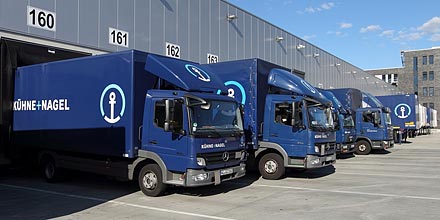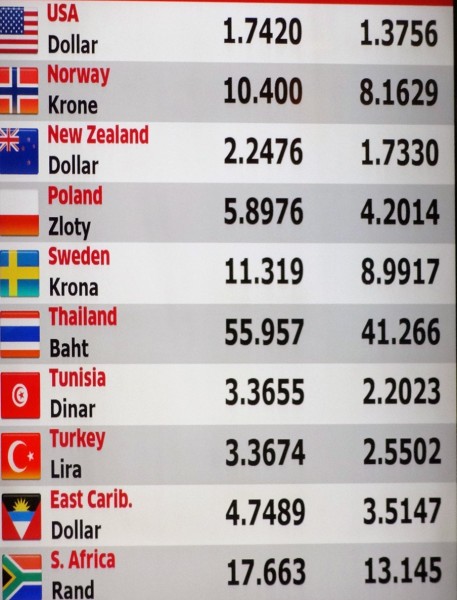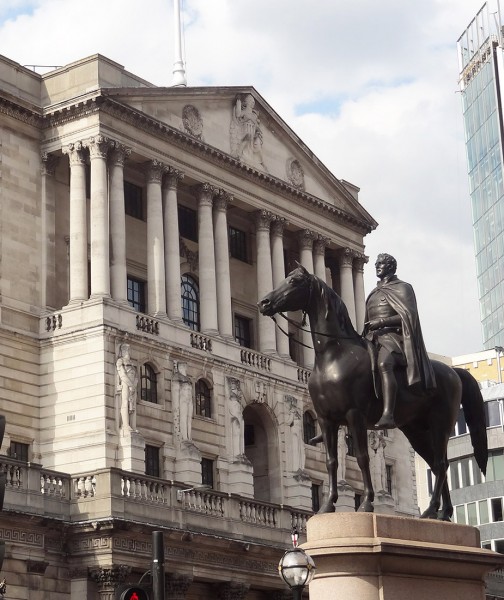 The Competition and Markets Authority (CMA), launched in October 2013, has been operating since April of this year. It is the successor to the Office of Fair Trading (OFT) and the Competition Commission. One of the current cases under investigation by the CMA is that of suspected criminal cartel activity in the supply of galvanised steel tanks.
The Competition and Markets Authority (CMA), launched in October 2013, has been operating since April of this year. It is the successor to the Office of Fair Trading (OFT) and the Competition Commission. One of the current cases under investigation by the CMA is that of suspected criminal cartel activity in the supply of galvanised steel tanks.
On 11 July, Clive Geoffrey Dean, a former director of Kondea, and Nicholas Simon Stringer, a former director of Galglass, appeared before Westminster Magistrates Court. They were charged with dishonestly agreeing with others to divide customers, fix prices and rig bids between 2004 and 2012. The deals were with a number of companies. The charges are under section 188 of the Enterprise Act 2002.
This is the second prosecution in this case. On 17 June 2014, Mr Peter Nigel Snee, Managing Director of Franklin Hodge Industries, pleaded guilty to similar charges.
Under the Act, directors found guilty face custodial sentences of up to 5 years and unlimited fines. The CMA and government are keen to send the message that they will not tolerate cartels and that board members had better beware of colluding with other companies. Indeed, the CMA is committed to pursuing cases of suspected criminal cartels more frequently and more rigorously.
The question is whether this will deter criminal collusion or whether it will simply make companies more careful to keep collusion hidden from the authorities.
Two men face charges in ongoing criminal cartel investigation CMA Press Release (11/7/14)
The First Real Test of Sentencing for the UK Cartel Offence Competition Policy Blog: UEA/ESRC/ccp, Andreas Stephan (24/6/14)
An Important Watershed in the CMA’s Prosecution of the Criminal Cartel Offence Eversheds (18/6/14)
Questions
- What types of restrictive practices constitute ‘cartel agreements’?
- In what ways are cartels against the interests of their customers?
- Are there any ways in which consumers might gain from a cartel?
- What factors are taken into consideration in deciding whether a director is guilty under section 188 of the 2002 Enterprise Act.
- Find out what other cases are being considered by the CMA. Choose one or two and examine how the activities of the firms/people involved might adversely affect consumers or other firms.
- Is anti-cartel legislation in the UK similar to that in the EU for cartels operating in more than one EU country?
 One example of an oligopoly was recently discussed on this blog –supermarkets. Here, is another classic example: the energy sector. It is dominated by six big firms, which hold the majority of the market in an industry with high barriers to entry; there is inter-dependence between the firms; and there are accusations of price fixing and collusion – all typical features of an oligopoly that may operate against consumers’ interests.
One example of an oligopoly was recently discussed on this blog –supermarkets. Here, is another classic example: the energy sector. It is dominated by six big firms, which hold the majority of the market in an industry with high barriers to entry; there is inter-dependence between the firms; and there are accusations of price fixing and collusion – all typical features of an oligopoly that may operate against consumers’ interests.
There have been numerous investigations into the actions of these energy providers, owing to their high prices, a lack of competition and significant profits. Developments in the industry have focused on reducing the barriers to entry created by the vertical integration of the incumbent firms in order to make it easier for new firms to enter, thus boosting competition.
However, the latest step is the biggest one, with the energy regulator, Ofgem, referring this industry to the Competition and Markets Authority (CMA). The investigation is likely to last 18 months and will ‘leave no stone unturned in establishing the truth behind energy prices’.
One of the key things that will be investigated is the accusation of profiteering and thus whether the big six should be broken up. This would inevitably lead to reductions in entry barriers and more opportunities for new firms to enter the market, thereby creating a much needed increase in competition. The Chief Executive of Ofgem, Dermot Nolan said:
Now is the right time to refer the energy market to the CMA for the benefit of consumers…There is near-unanimous support for a referral and the CMA investigation offers an important opportunity to clear the air. This will help rebuild consumer trust and confidence in the energy market as well as provide the certainty investors have called for.
Further comments were made about the energy sector and the future direction in terms of market reforms. This was another reason given for the referral to the CMA. Dermot Nolan added:
A CMA investigation should ensure there are no barriers to stop effective competition bearing down on prices and delivering the benefits of these changes to consumers.
The impact of this latest news will undoubtedly be felt by the big six, with share prices already taking a small hit, as investors start to look ahead to the potential outcome, despite any decision not being expected for a good 18 months. The following articles consider this latest energy market development.
Ofgem puts big six energy suppliers under CMA spotlight The Guardian, Terry Macalister (26/6/14)
Ofgem refers ‘big six’ energy groups for competition probe Financial Times, Claer Barrett (26/6/14)
U.K. energy regulator Ofgem asks for utilities probe Wall Street Journal, Selina Williams (26/6/14)
Energy probe could lead to ‘major structural change’ BBC News (26/6/14)
Probe into energy firms’ £100 per home profits The Telegraph, Emily Gosden (26/6/14)
UK competition watchdog kicks off energy suppliers probe Reuters (26/6/14)
Energy sharks may £101 profit per family: Major inquiry launched into power Mail Online, Sean Poulter (26/6/14)
Big six energy firms face full competition probe Independent, Simon Read (26/6/14)
Questions
- How well does the energy sector fit the structure of an oligopoly?
- What are the barriers to entry in the energy market? How can this referral to the CMA help to reduce them?
- Which factors determine the price of energy?
- The big six have been accused of profiteering. What is meant by this and why is it against the public interest?
- Why has it taken so long for such a referral to take place?
- In the BBC News article, the suggestion is that this investigation could lead to a ‘major structural change’. What is meant by this and why is it a possibility?
 Last month the Swiss air freight company Kuehne + Nagel International AG was fined just over NZ$3m (around £1.5m) by the New Zealand Commerce Commission for their part in a price fixing cartel that ran for 5 years.
Last month the Swiss air freight company Kuehne + Nagel International AG was fined just over NZ$3m (around £1.5m) by the New Zealand Commerce Commission for their part in a price fixing cartel that ran for 5 years.
In 2002 the firms in the industry faced higher costs due to increased security measures imposed by the British government. They formed a cartel to agree to pass these increased costs on to their customers for air freight services from the UK to a number of countries, including New Zealand. The investigation by the New Zealand competition authority followed a leniency application by one of the participants in 2007. Five other participants had previously been fined, but Kuehne + Nagel decided to fight the case. The fine imposed on them brought the total fines to almost NZ$12m (around £6m).
 A previous post on this site highlighted how golf played a prominent role in several previous cartels. However, this cartel seemed to have had a fixation on gardening and referred to the cartel as the gardening club. Other parties involved in the cartel were referred to as fellow gardeners and the agreed upon price as the price for asparagus! When a participant suspected a rival may have cheated on the cartel agreement email exchanges such as this one took place:
A previous post on this site highlighted how golf played a prominent role in several previous cartels. However, this cartel seemed to have had a fixation on gardening and referred to the cartel as the gardening club. Other parties involved in the cartel were referred to as fellow gardeners and the agreed upon price as the price for asparagus! When a participant suspected a rival may have cheated on the cartel agreement email exchanges such as this one took place:
I hear… concerns about the price of produce from the garden of Velcro, which appears to be operating as a charitable cooperative for the benevolence of vegetable eaters rather than growers…
It is not known whether the Kuehne + Nagel employees involved in the cartel were placed on gardening leave during the investigation!
‘Gardening Club’ hid hardcore air freight cartel New Zealand Herald, Hamish Fletcher (04/04/14)
‘Gardening Club’ Air Freight Forwarding Cartel Finally Buried by High Court Handy Shipping Guide (08/04/14)
Swiss firm fined $3.1 million over cartel 3 News (08/04/14)
‘Gardening Club’ freight cartel participant, Kuehne + Nagel, fined $3.1m The National Business Review (08/04/14)
Questions
- Why is an increase in costs likely to trigger price fixing behaviour?
- Why might the members want to use code names to run a cartel’s activities?
- Why do competition authorities grant leniency to cartel members that inform them about price fixing behaviour?
 According to latest evidence from the Bank for International Settlements, in April 2013 some £3.2 trillion ($5.3 trillion) of foreign exchange was traded daily on global foreign exchange (forex) markets. About 40% of forex dealing goes through trading rooms in London. This market is highly profitable for the UK economy. But all is not well with the way people trade. There is a scandal about rate fixing.
According to latest evidence from the Bank for International Settlements, in April 2013 some £3.2 trillion ($5.3 trillion) of foreign exchange was traded daily on global foreign exchange (forex) markets. About 40% of forex dealing goes through trading rooms in London. This market is highly profitable for the UK economy. But all is not well with the way people trade. There is a scandal about rate fixing.
Exchange rates on the forex market are freely determined by demand and supply and fluctuate second by second, 24 hours a day, except for weekends. Nevertheless, once a day rates are fixed for certain trades. At 4pm GMT a set of reference rates is set for corporate customers by banks and other traders. The rates are set at the free market average over the one minute from 16:00 to 16:01. The allegation is that banks have been colluding, through text messaging and chat rooms, to manipulate the market over that one minute.
Since the early summer of 2013, the Financial Conduct Authority (FCA) in the UK, along with counterparts in the USA, Switzerland, Hong Kong and elsewhere, has been looking into these allegations. Last week (4/3/14), the Bank of England suspended a member of its staff as part of its own investigation into potential rigging of the foreign exchange market. The allegation is not that the staff member(s) were involved in the rigging but that they might have known about it. The Bank said that, “An oversight committee will lead further investigations into whether bank officials were involved in forex market manipulation or were aware of manipulation, or at least the potential for such manipulation.”
The Bank said that, “An oversight committee will lead further investigations into whether bank officials were involved in forex market manipulation or were aware of manipulation, or at least the potential for such manipulation.”
Meanwhile, the House of Commons Treasury Select Committee has been questioning Bank of England staff, including the governor, Mark Carney, about the scandal. Speaking to the Committee, Martin Wheatley, head of the FCA said that the investigation over rigging had been extended to 10 banks and that the allegations are every bit as bad as they have been with Libor.
Forex rigging ‘as serious as’ Libor scandal: Carney Yahoo News, Roland Jackson (11/2/14)
Forex manipulation: How it worked HITC (Here Is The City), Catherine Boyle (11/3/14)
Bank of England Chief Grilled Over Forex Scandal ABC News, Danica Kirka (11/3/14)
Carney Faces Grilling as Currency Scandal Snares BOE Bloomberg, Scott Hamilton and Suzi Ring (10/3/14)
UK financial body urges quick action over foreign exchange ‘fixing’ Reuters, Huw Jones (11/3/14)
Timeline -The FX “fixing” scandal Reuters, Jamie McGeever (11/3/14)
Forex in the spotlight Financial Times (16/2/14)
Forex scandal: What is that all about? BBC News (11/3/14)
 Bank of England in shake-up after rate manipulation criticism BBC News (11/3/14)
Bank of England in shake-up after rate manipulation criticism BBC News (11/3/14)
 Mark Carney faces Forex questions from MPs BBC News, Hugh Pym (11/3/14)
Mark Carney faces Forex questions from MPs BBC News, Hugh Pym (11/3/14)
Bank of England’s Paul Fisher: ‘It’s not our job to go hunting for market wrongdoing’ Independent, Russell Lynch , Ben Chu (11/3/14)
Questions
- For what reasons would sterling appreciate against the dollar?
- Most of forex trading is for speculative purposes, rather than for financing trade or investment. Why is this and does it benefit international trade?
- If foreign exchange rates fluctuate, is it not a good thing that banks collude to agree the 4pm fixed rate? Explain.
- What was the Libor scandal? Why are some people arguing that the current forex scandal is worse?
- What can the FCA do to prevent collusion over exchange rates?
 Apple was last week found guilty in the US for its role in the fixing of e-book prices. A subsequent hearing will now be held to determine the damages that Apple will be forced to pay. However, Apple vehemently denies the allegations and looks set to appeal the decision.
Apple was last week found guilty in the US for its role in the fixing of e-book prices. A subsequent hearing will now be held to determine the damages that Apple will be forced to pay. However, Apple vehemently denies the allegations and looks set to appeal the decision.
To understand what the US Department of Justice (the European Commission has also brought a case) is objecting to, we need to look back to how pricing in this rapidly growing market has evolved over time.
Until the end of 2009 e-books were sold under a wholesale pricing model. Here, publishers charge retailers a wholesale price per book and retailers are then free to charge final consumers whatever price they choose. This all changed in the US (there were also similar developments in Europe) during an eventful period of a few days in January 2010 when Apple unveiled its iPad for April release.
The publisher Macmillian proposed that Amazon switch to an agency pricing model under which the publisher sets the retail price. This is typically referred to by economists as Resale Price Maintenance (RPM). Interestingly, RPM has a long history in the book industry. In the UK for example, throughout most of the last century publishers set prices under the Net Book Agreement, until this broke down in the mid 1990s. In addition, in some countries, for example Germany, books continue to be sold under RPM.
Macmillan also threatened Amazon that if it preferred to keep wholesale pricing it would delay the supply of e-book releases to them. Amazon initially responded by refusing to stock Macmillan titles. However, soon after Amazon ceded to Macmillan’s proposal. Despite this, Amazon made clear its dissatisfaction to its customers:
We have expressed our strong disagreement and the seriousness of our disagreement by temporarily ceasing the sale of all Macmillan titles. We want you to know that ultimately, however, we will have to capitulate and accept Macmillan’s terms because Macmillan has a monopoly over their own titles, and we will want to offer them to you even at prices we believe are needlessly high for e-books.
It turned out that 5 of the 6 major publishers (including Macmillan) had already agreed the same agency terms to sell e-books for Apple devices. Like Macmillan, the other publishers all then also imposed agency pricing on Amazon. Furthermore, crucial to the contracts agreed with Apple was a so called ‘most-favoured customer’ clause which guaranteed that e-books would not be sold elsewhere at prices below those charged to Apple customers. Effectively, therefore, this clause made it necessary for the publishers to impose agency terms on Amazon. The Department of Justice objected to this and believed consumers would be harmed due to higher prices. All of the publishers involved eventually decided to settle the case, leaving Apple alone to fight the case in court.
In the decision Judge Cote concluded that:
the publisher defendants conspired with each other to eliminate retail price competition in order to raise e-book prices, and that Apple played a central role in facilitating and executing that conspiracy. Without Apple’s orchestration of this conspiracy, it would not have succeeded as it did in the Spring of 2010.
It is interesting to consider the reasons why the publishers would be keen to take control of the prices Amazon charges for e-books. Evidence suggests that Amazon was frequently retailing e-books at substantial discounts and even below wholesale costs. One explanation for this is that Amazon was keen to increase demand for Kindle devices. The publishers, on the other hand, might well be concerned about the implications of Amazon dominating the e-book market. Potentially, this would give Amazon significant bargaining power over them.
Of course, such dominance might also have knock-on effects on consumer prices in the long-run. Whether the publishers will be permitted to use agency pricing to mitigate such concerns in the future remains unclear and depends on whether the competition authorities object to agency pricing per se or just the coordinated way in which it was achieved.
As the articles below demonstrate, opinion is strongly divided for and against the judgement against Apple.
EU raids ebook publishers in price fixing investigation The Guardian, Benedicte Page and Leigh Phillips (4/3/11)
Apple Faces Damages Trial Over E-Book Antitrust Violation Bloomberg Businessweek, Bob Van Voris, Adam Satariano and David McLaughlin (10/7/13)
Apple played ‘central role’ in ebook price-fixing conspiracy, says federal judge The Guardian, Amanda Holpuch (11/7/13)
US: Apple found guilty, but what happens next? Competition Policy International (11/7/13)
Why It’s Insane That No One Cares About Apple’s Price-Fixing Conspiracy (AAPL) Seattle pi, Jim Edwards (13/7/13)
Apple Learns The Hazards Of Innovation With E-Book Antitrust Ruling Forbes, Daniel Fisher (10/7/13)
Questions
- What are the important features of the e-book market?
- What are the key differences between the traditional and e-book markets?
- To what extent do Amazon and Apple have different incentives in the e-book market?
- Do you think Resale Price Maintenance is more likely to harm competition in the market for traditional or e-books?
- What do you think might be the short and long-run implications of this decision?
 The Competition and Markets Authority (CMA), launched in October 2013, has been operating since April of this year. It is the successor to the Office of Fair Trading (OFT) and the Competition Commission. One of the current cases under investigation by the CMA is that of suspected criminal cartel activity in the supply of galvanised steel tanks.
The Competition and Markets Authority (CMA), launched in October 2013, has been operating since April of this year. It is the successor to the Office of Fair Trading (OFT) and the Competition Commission. One of the current cases under investigation by the CMA is that of suspected criminal cartel activity in the supply of galvanised steel tanks.





